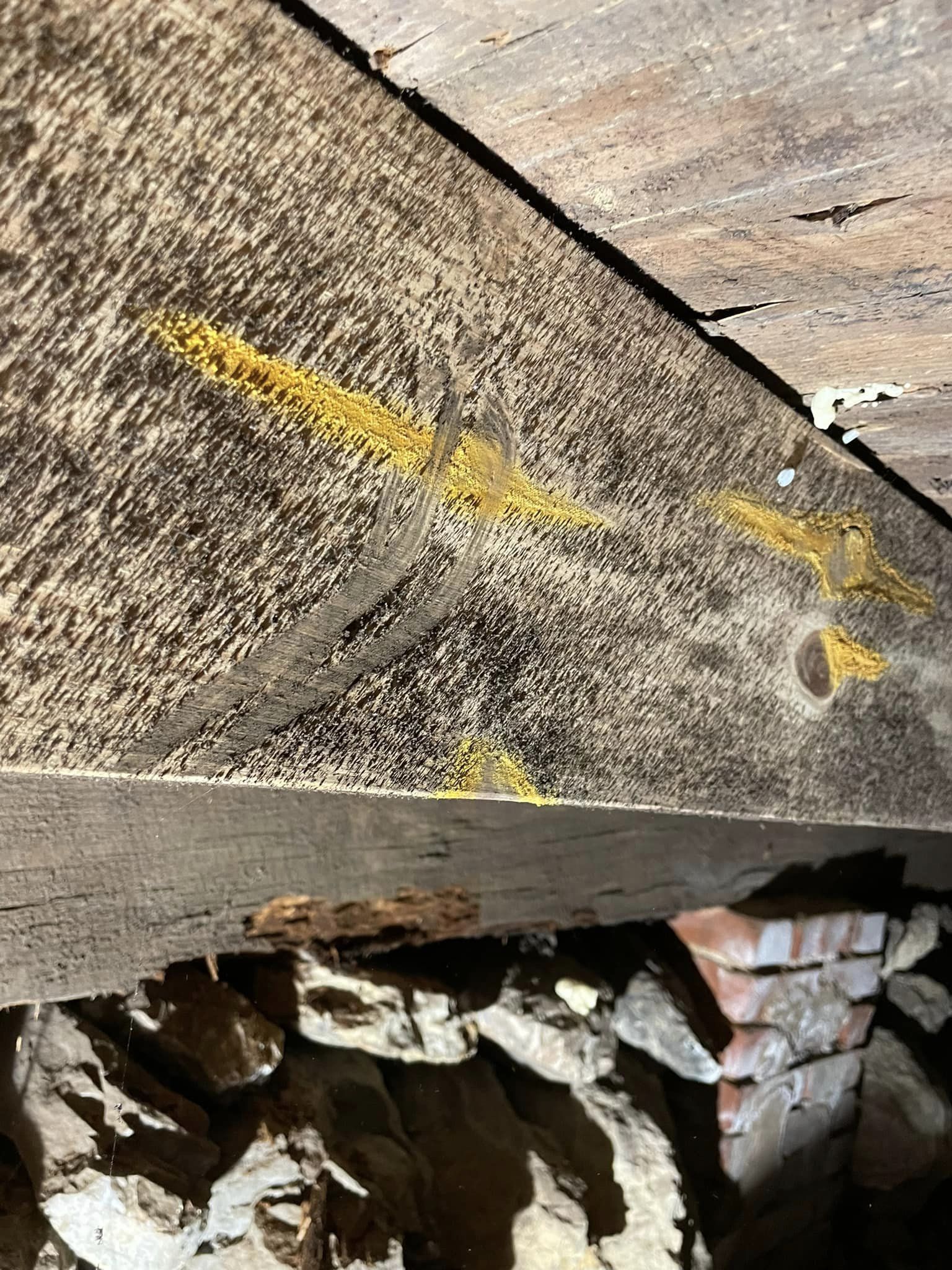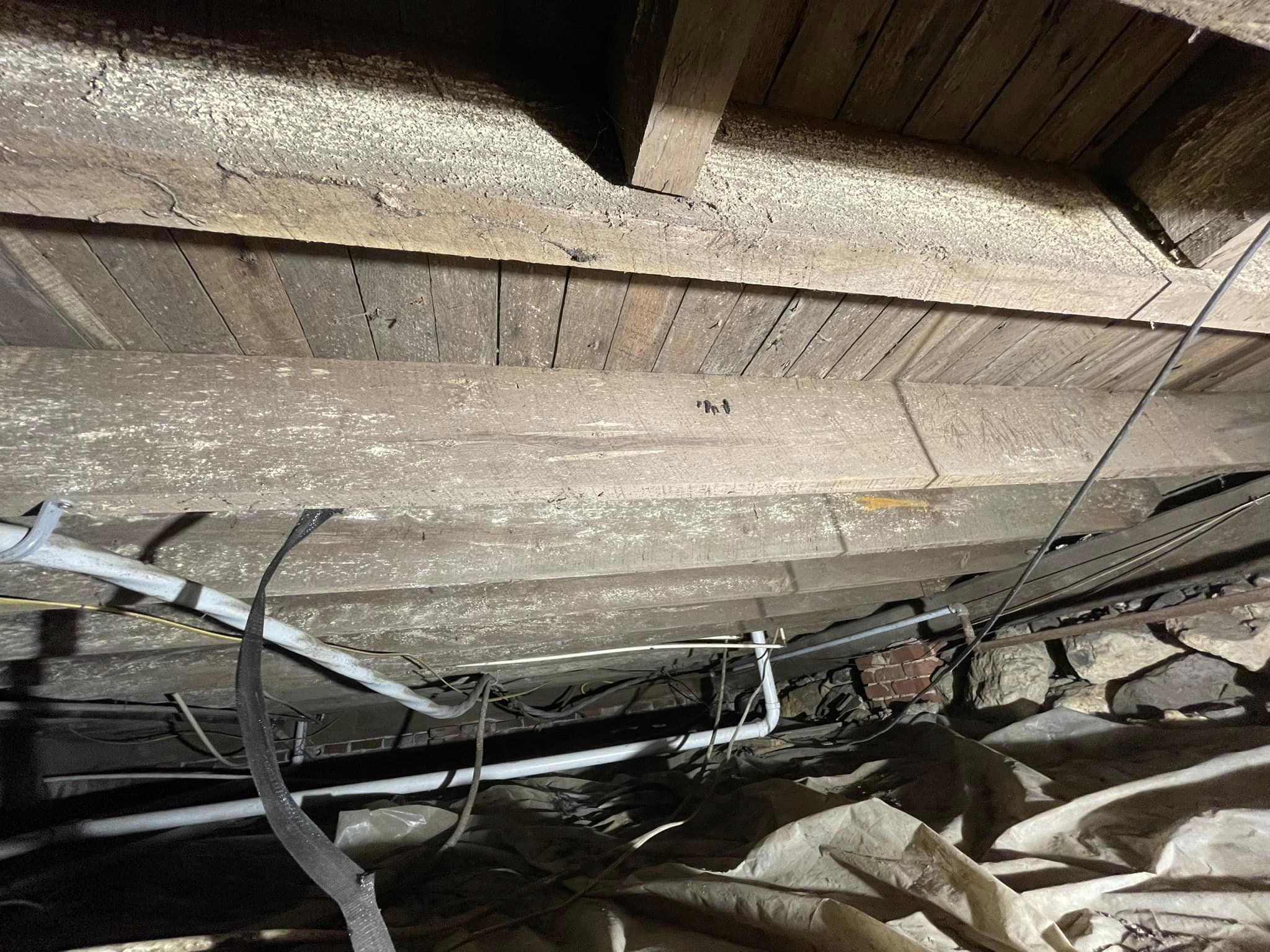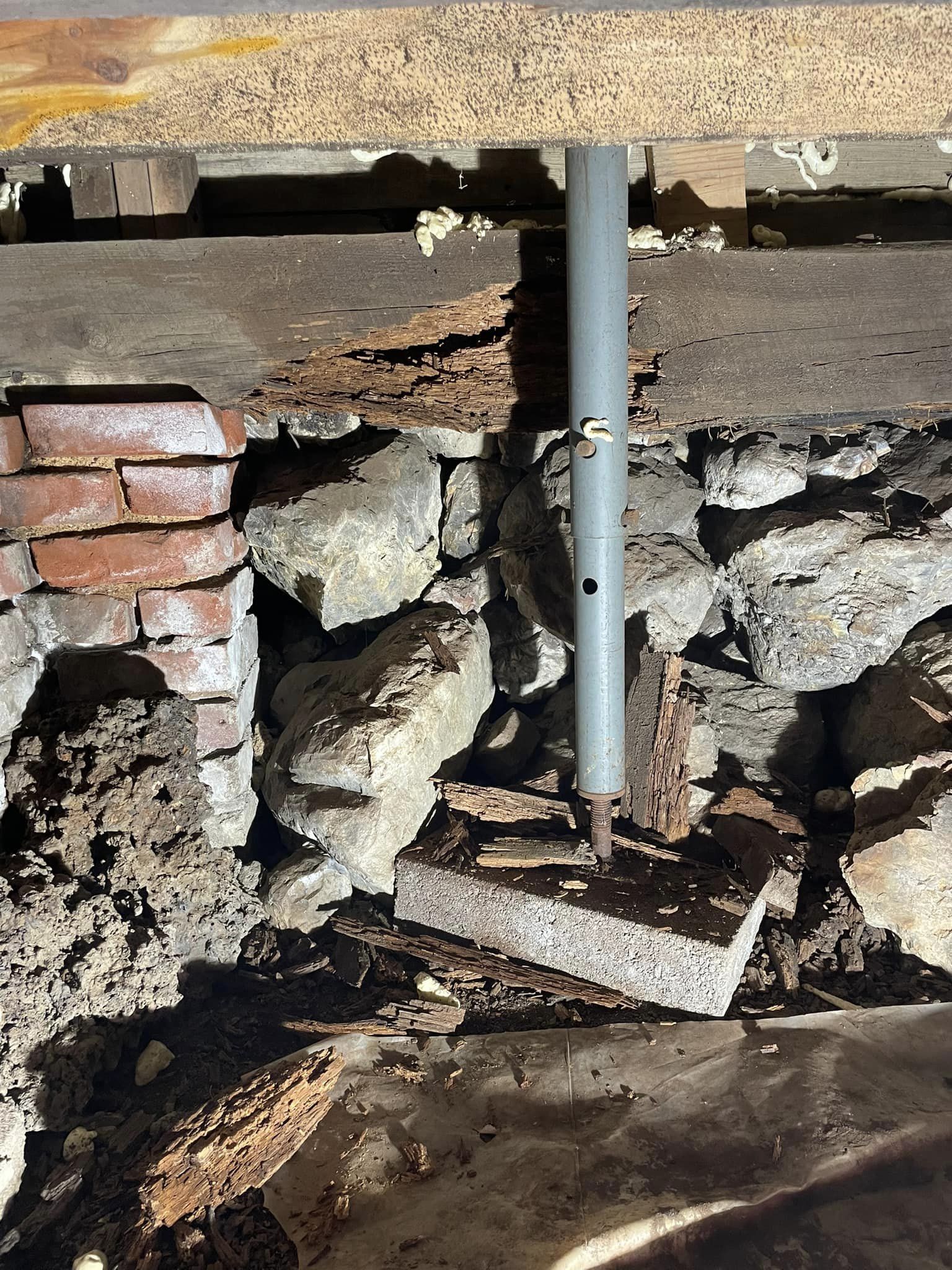Can a 100-year-old house with severe dry rot be salvaged by encapsulating and replacing damaged beams, or is it beyond repair?
11 months ago
Last Updated: July 26, 2024
This house is a century old and has a lot of dry rot issues. The first picture shows a relatively “new” 2×8 that’s about 8 years old. The second picture displays a significant amount of mold and other fungal growth on the actual 2×8 pine floor joist. The girders, which are 8×8, have rotted through in some places – I can literally pull them apart with my hands.
I was thinking of encapsulating the affected areas, controlling the humidity, and replacing the damaged beams with new pressure-treated ones. The extent of the damage is pretty overwhelming.
If you have any experience dealing with this kind of situation, I would really appreciate any advice or input you could offer.



If the beams are still solid, no need to replace them. Clean them well with vinegar and use mold-blocking paint. Damp spaces like this can benefit from poly coating the floor and sealing it with spray foam. An air exchanger might be necessary along with a dehumidifier. Save beam replacement for last resort, but swap out any old and rotten ones. Hang in there, you’ll figure it out!
I’d help them run again, add some new headers for extra support, then repaint all the old wood and use a dehumidifier. Good as new!
No content
I faced similar challenges with my log cabin and Michigan basement. I created negative air pressure, brushed the joists with a stiff brush, then sprayed them with Microban. Make sure to get airflow going, use a dehumidifier, and heat up the house to remove all moisture. When replacing rotted columns, consider using steel or treated 4×6 beams, and support them with a bottle jack next to the existing column during installation.
Are you interested in tackling a DIY project or would you rather have someone else handle it? The old wood, although rotted, is the right size. You can use it as a template or run it through your table saw to adjust your fence. Keep in mind that what may appear to be a perfect square could be slightly off. I’ve had to stop working with my neighbor because he always ruins old wood and its accurate measurements. He may believe he’s an engineer, but it takes four times longer to fix something while dealing with incompetence.
The old masters had a unique technique of blending materials using hand tools instead of modern equipment like electric planes and impact drivers.
This isn’t a DIY project. You’ll want to hire a reliable contractor to handle the repairs.
If the beams are not in contact with the ground, there is no need for pressure treatment. I suggest replacing the rotten beams and joists, adding new posts with properly sized footings. It would be wise to consult a structural engineer for footing size recommendations. Afterwards, replace the damaged wood, encapsulate the crawlspace, and install a dehumidifier to maintain RH below 60% for longevity.
Dealing with persistent condensation leading to extensive moisture damage and rot. The brick piers are in poor condition due to missing mortar. It’s crucial to get a professional assessment and create a repair plan to stabilize the damage and address the moisture issues before proceeding with any repairs.
Currently tackling this issue. I’m taking a DIY approach and sourcing the same size timbers from the sawmill to replace the damaged ones. I have a mix of 12x12s and a few 8x8s. Started by pouring new concrete footers and constructing block piers. The joists were spanning too far, so I installed some girders for additional support. It might be best to have a reliable contractor and engineer deal with replacing the girders.
Seal the floor with plastic and add X square feet of underfloor ventilation as per code. Consider using spray foam insulation after replacing the necessary joists and beams.
Termites? Are you talking about termites?
Hey Chaz, no tunnels found but found fungus evenly spread out. Looks like dry rot to me. The old pine seems brittle and the sections I removed are much lighter than expected. They measure 2×8 inches but feel as light as a 2×4.